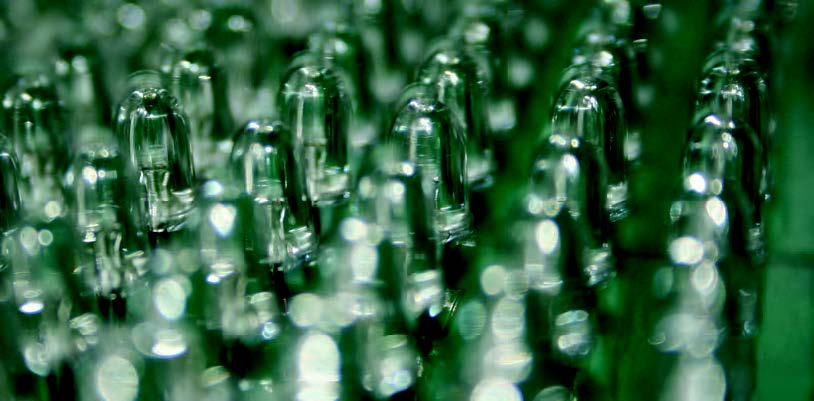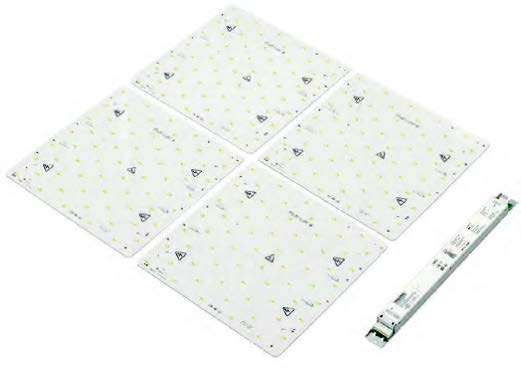
This article explores the latest lighting trends in the health and care sectors and looks at how LED technology is helping the NHS to reduce its carbon footprint and save money.
“Traditional, incandescent lightbulbs are already a distant memory, with so many new lighting products being launched” said a spokesman for workplace equipment supplier, Slingsby. “However, many hospitals understandably find buying lights and bulbs a minefield because, of the array of products that all vary in terms of cost and energy efficiency.”
Make your choice
The main types of lighting currently used include the standard compact fluorescent lamps (CFL), halogen lamps, fluorescent tubes, and Light Emitting Diodes (LEDs).
LEDs in particular have become hugely popular within the health and care markets, offering a relatively-low-cost way of improving lighting at the same time as reducing costs.
It is also relatively easy to achieve energy savings of 50%-80%.
Chris Bourne, project manager at Century Lighting, said: “LED technology has three key benefits. It helps to reduce an organisation’s carbon footprint, it reduces running costs, and it lowers maintenance costs.
“LEDs are becoming increasingly attractive as they offer a very-good quality of light that can be tuned to the correct colour renditions for different applications, for example softer light during hospital visiting times or late evening, but a stronger, clearer light when a clinician is making a bedside visit.”
In recent years the technology has changed beyond recognition and improvements include new, smaller, shallower design capabilities; a 100,000-hours-plus lifespan; and an increase in lumen/watt output of as much as 100 compared with conventional lighting.
Matt Caygill, UK and Nordic region business development manager at Tridonic, told hdm: “LEDs are giving lighting equipment manufacturers the opportunity to design small shallow fittings and to manipulate the size and performance by use of optics and lens systems.
"They now come in different colour temperatures, from 3000k to 6500k and can be tuneable, which is key for 24/7 hospital services.”


Return on investment
Retrofitting
Another benefit of LED lighting is that systems can be retrofitted into existing facilities relatively easily.
Caygill said: “Due to their size, performance, and the return on investment; retrofit solutions offer hospitals a cheaper, more-efficient solution, making it easier for them to get the funds to improve their lighting systems.”
Bourne added: “Retrofits with LEDs is a really big market in the healthcare sector and in many instances opens the project up to SALIX funding.”
Procurement packages
Not only are there energy efficiency funding streams such as SALIX available, but manufacturers themselves are increasingly offering their own procurement solutions.
Aura Lighting, for example, has launched ‘Rent Your Lighting’. Through this, the company provides a new lighting plan with a full financial calculation together with energy-saving and CO2-saving documentation.
Once a project is agreed, it is entirely managed from start to finish, with the company taking over installation, financing and putting in place a performance guarantee for the full contract period.
Simon Taylor, Aura Lighting’s UK’s managing director, said: “The concept appeals to hospitals as the scheme aids cash flow, keeping costs off the balance sheet and taking advantage of tax benefits.”
Bourne added: “Lighting rental is an approach that is growing and gaining more interest and could be a good way forward for healthcare estates who would benefit from the energy savings without the immediate capital expenditure.
“You are, in effect, hiring the fittings and a benefit is that you can upgrade far more easily to incorporate the latest technology.”
Battling the bugs
Modern ultraviolet LEDs are particularly popular in healthcare settings because they can assist with infection control.
“In places where there are people who are unwell, such as hospitals, it can be difficult to disinfect surfaces because they are used so often. The potential of UV LEDs in these settings is therefore enormous”, said Steve Ellwood, managing director of lighting specialist, BLT Direct.
UV LEDs work by destroying a germ’s capability to perform vital cellular functions, including disrupting its DNA and destroying the nucleic acids it needs to survive.
As such, these lights could not only replace disinfection techniques for places like GP surgeries and hospitals, but could even pioneer new ways of disinfecting items unable to be washed.
"We are probably several years away from having UV LEDs used in places like shopping centres, but it’s probable that hospitals and surgeries in the UK will be the first to benefit from this new technology," said Ellwood.
Looking to the future
The Slingsby spokesman added: “There are several new products on the horizon, such as bulbs made with graphene, which is 200 times stronger than steel and one million times thinner than human hair, which means it conducts electricity and heat very effectively. The technology should go on sale soon and will compete with LEDs in terms of price, energy efficiency and lifespan.”
And the very-latest lighting management and control systems will help to increase future possibilities still further.
Taylor said: “Lighting control opens up many possibilities when it comes to maximising the energy savings and it makes it possible to control when and how much light is needed. In fact, lighting control can reduce energy consumption by up to 80%. Sensing with this type of lighting control means that no-one needs to remember to switch lights on and off again.”